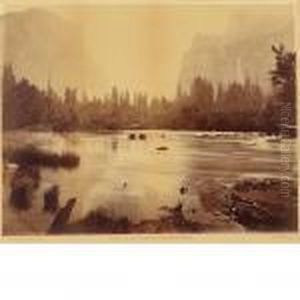Eadweard Muybridge Paintings
Eadweard Muybridge, born Edward James Muggeridge in Kingston upon Thames, England, was a pioneering figure in photographic studies of motion and early motion-picture projection. He emigrated to the United States in the 1850s, where he changed his name and began a career first in publishing and then in photography, becoming famous for his landscape photographs of the American West, particularly of Yosemite National Park. Muybridge's most notable contribution to art and science came through his work on motion. In 1872, he was hired by Leland Stanford, the industrialist and horseman, to settle a bet about whether all four of a horse's hooves are off the ground at the same time during a trot. Muybridge's initial efforts were unsuccessful due to the limitations of photographic technology at the time. However, by 1878, he had developed a high-speed shutter system and arranged a series of cameras along a track. His photographs of the horse named 'Sallie Gardner' convincingly showed the horse in a gallop with all four feet off the ground, thereby revolutionizing the understanding of animal and subsequently human motion. Following this success, Muybridge continued to refine his motion capture techniques, resulting in the publication of 'Animal Locomotion' in 1887, an extensive portfolio of animals and humans in motion. He also invented the zoopraxiscope, a device for projecting motion pictures that pre-dated celluloid film strips used in cinematography. Despite personal challenges, including a trial for the murder of his wife's lover (for which he was acquitted on the grounds of justifiable homicide), Muybridge's work laid the groundwork for the development of motion picture technology and had a profound impact on both the scientific study of motion and the arts. His innovations are considered precursors to modern cinematography and animation, making him a key figure in the transition from static photography to the dynamic representation of movement.











